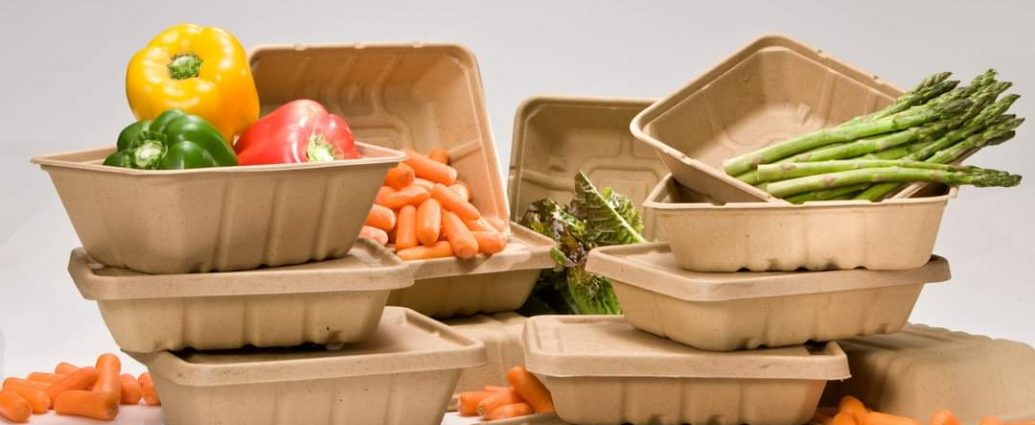Each year, the United States alone generates millions of tons of plastic food containers and packaging, yet only a small percentage is recycled or burned for energy. To add insult to injury, biodegradable packaging makes up a mere fraction of overall production, leaving the rest to decompose in landfills over hundreds of years. However, a few new compostable alternatives are providing a glimmer of hope for the future of food packaging.
Indistinguishable from traditional designs, Bio4Pack offers a meat tray that is completely compostable. The tray itself is made of Polylactic Acid (PLA), which is sourced from sugar cane, and contributes to a considerably lower environmental impact than its plastic-based competitors. Even the cellulose absorption pad and label are compostable. The tray is the first of its kind to be in accordance with strict European standards, representing a promising innovation for commercial meat packaging. Only a fraction more expensive than traditional plastic trays, Bio4Pack has already seen its product adopted by the Dutch supermarket chains SuperUnie and EkoPlaza, though its potential could reach to encompass wholesale and retail meat and poultry providers.
The Italian brand BIOPAP manufactures oven- and freezer-safe trays suited for catering, ready-made meals, restaurants, and more. Sourced from all renewable raw materials and processed using renewable energy, these trays are recyclable, biodegradable, and compostable. Left to the elements, the trays will dissolve under natural processes without harming the surrounding water or soil. BIOPAP trays can withstand both deep-freezing and oven temperatures, with a range spanning from -80°C to 215°C. This versatility makes them perfect for many applications, while retaining a low environmental impact. With ongoing operations on all continents, BIOPAP combines functionality and ecological awareness for their versatile packaging alternative.
From the Tag Packaging company comes the innovative 100BIO foodware line, sporting 100% biodegradable foam packaging made from PLA. The line of 16 products includes clamshell boxes, cups, and even sushi trays. Unlike their Styrofoam competitors, 100BIO products are sustainable while also using 60% less raw material. The lightweight but sturdy foam is also insulating, heat-resistant, freezer-safe, and non-toxic. At the end of its life, each product can be recycled, composted, incinerated, or even converted back into PLA, making it a much more environmentally friendly option than polystyrene-based packaging. Price comparable to other sustainable brands, 100BIO offers a high-performance, resource-conscious solution to single-use plastic waste ideal for many food industry sectors.
Another compostable creation, TIPA provides flexible and multilayered packaging options as an alternative to non-recyclable plastic film. Pertinent to both produce and dry foods, TIPA packaging comes in many forms, including bags, pouches, packets, wrappers, and laminates. They are also functionally the same as conventional plastic in terms of shelf life and durability, transparency, sealing strength, printability, and flexibility. Though they cannot be recycled, these products are perfect for home or commercial composting, fully decomposing within 180 days. Additionally, the packaging seamlessly fits with industrial machinery, making the transition to compostable options even easier. Loaded with success stories, TIPA stands out as a promising leader in plastic alternatives.
In a consumer world, food packaging is unavoidable, but these green options provide the first step in paving the way for a plastic-free future. Nevertheless, in order to make the most out of these innovations, production and education must go hand-in-hand to ensure these products are composted and recycled properly. If we can achieve this, then we are well on our way to bettering ourselves, our community, and our planet.
—--Zoe Lauer

